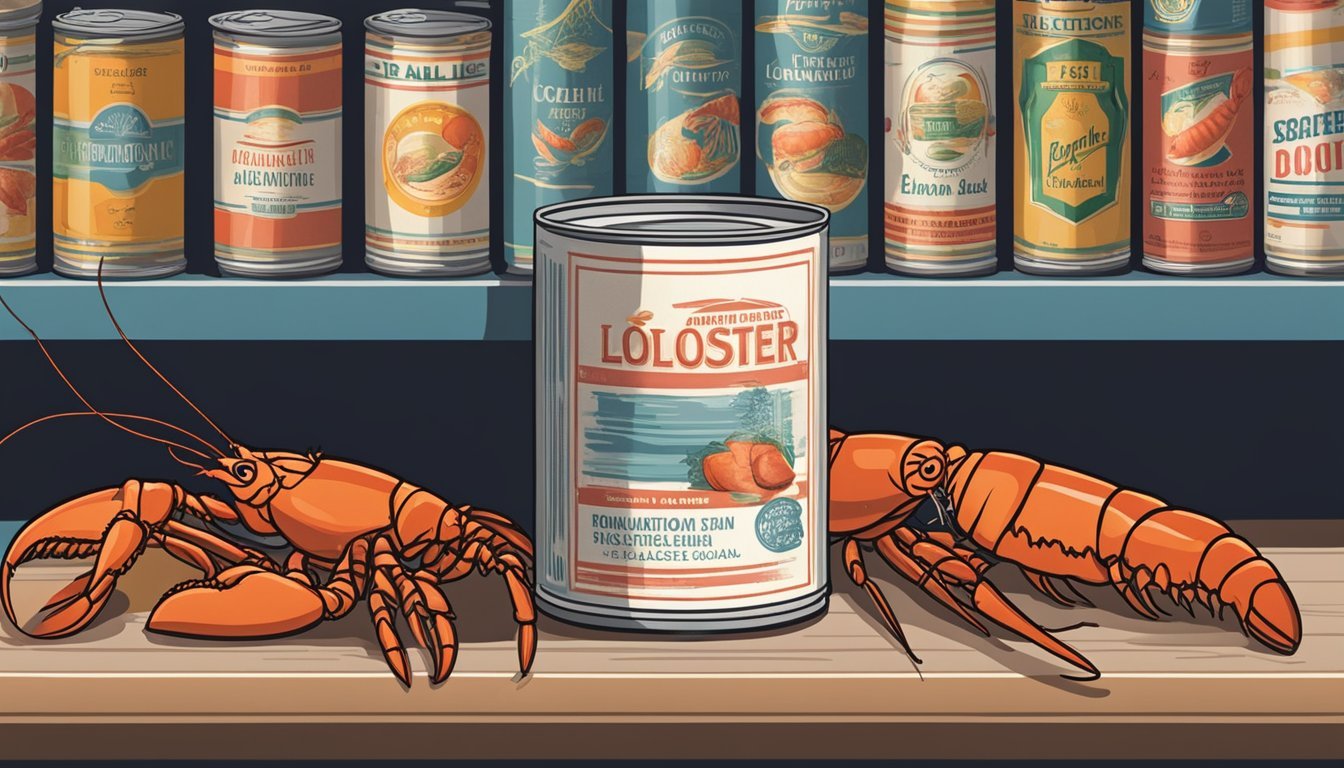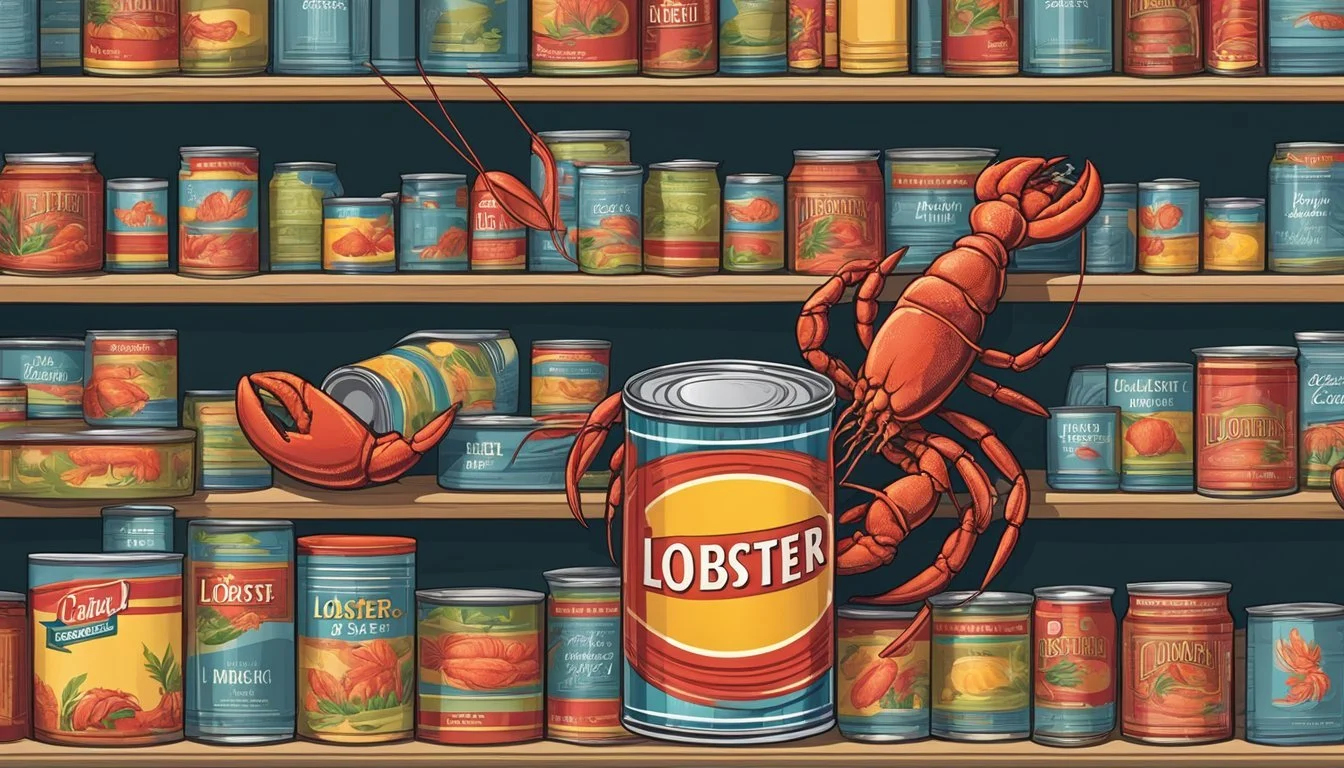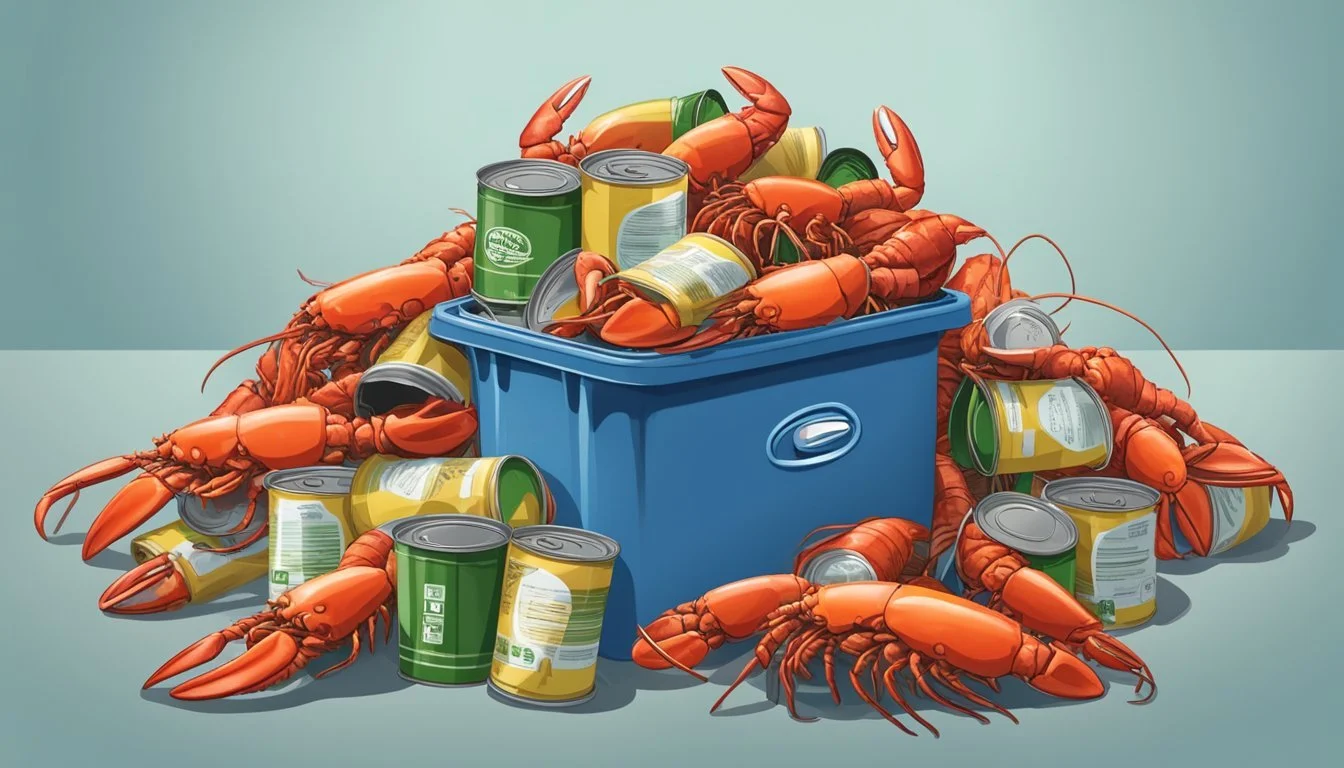Does Canned Lobster Expire?
Understanding Shelf Life and Safety
Canned lobster, like many canned foods, has a potentially long shelf life. The canning process is designed to preserve the lobster for extended periods, ensuring that it remains safe to eat well past the printed expiration date on the can. Typically, canned lobster can last for two to five years if stored properly and the can remains in good condition.
It is essential to inspect the condition of the can before consuming canned lobster. If the can is free of rust, dents, and swelling, the contents are likely still safe to eat. High-quality canned lobster offers a convenient way to enjoy this delicacy without the immediate need to consume it.
For those concerned about flavor and texture, it should be noted that over time, some degradation in quality might occur. While the lobster will remain safe to eat, the peak taste is usually experienced within the first couple of years after canning.
Understanding Canned Lobster
Canned lobster offers a convenient and shelf-stable way to enjoy seafood. This section explores the canning process and the characteristics that define canned lobster meat.
Canning Process and Types
Canned lobster involves preserving the lobster meat, typically claw and knuckle meat, in cans or jars. The meat is cooked and sometimes packed in liquids like salted water or olive oil to maintain quality and flavor.
There are different types of canned lobster products, including whole lobster, chunks, or a combination with other seafood. These variations are designed to meet diverse culinary needs, from simple salads to gourmet dishes.
Characteristics of Canned Lobster
Canned lobster retains most of its original nutritional value, including high levels of protein and essential vitamins. The texture may be slightly softer than fresh lobster, but it remains flavorful due to the preservation method.
Quality can vary depending on the brand and canning method, but canned lobster generally has a long shelf-life. It is important to store it in a cool, dry place and check expiration dates to ensure food safety.
Storage Guidelines for Canned Lobster
Proper storage is crucial to ensuring the quality and safety of canned lobster. Keeping it in an appropriate environment can prolong its shelf life, while being aware of signs of compromised cans helps prevent consumption of spoiled seafood.
Optimal Storage Conditions
Canned lobster should be stored in a cool, dry place. The pantry is typically an excellent choice. Maintaining a stable environment prevents the can from degrading over time. Extreme temperatures, both hot and cold, should be avoided as they can compromise the integrity of the packaging.
Ensuring the storage area is free from moisture is essential. Humidity can lead to rust, which might weaken the can's integrity and potentially lead to contamination. Always store unopened cans away from kitchen sinks or damp basements, and refrain from placing them near heat sources like stoves or direct sunlight.
Signs of Compromised Cans
It is important to regularly inspect cans for any signs of compromise before use. Bulging or swelling cans are a clear indication that bacteria might be producing gases inside. Similarly, dents, especially on the seams, can also lead to contamination.
Check for rusted or leaking cans. Rust can indicate that the can’s seal has been breached, and leaks are a sure sign the can is no longer airtight. Discoloration and unusual odors during inspection mean it's best to discard the product for safety.
By adhering to these guidelines, one can ensure that canned lobster remains safe and enjoyable for as long as possible.
Safety and Expiration of Canned Lobster
Canned lobster, like other canned foods, has a shelf life and can pose health risks if not stored properly. Key aspects to consider include understanding expiration dates and recognizing signs of spoilage.
Expiration Dates and Food Safety
Canned lobster typically comes with a best-by or use-by date, indicating the period during which the product maintains its best quality. The USDA and the Food Safety and Inspection Service recommend paying close attention to these dates for food safety.
While canned goods can last beyond their printed dates, quality starts to degrade, affecting the tastiness and safety. A compromised can (dented, rusted, or swollen) potentially harbors bacteria, including Clostridium botulinum, which produces toxins.
To ensure safety, consumers should store cans in cool, dry places and avoid using products past the best-by date if the can appears damaged. Proper storage is crucial to maintaining the safety and quality of canned lobster.
Recognizing Spoilage and Health Risks
Recognizing spoilage in canned lobster is essential for preventing food poisoning. Signs of spoilage include an off smell, altered taste, and changes in texture. The presence of any of these indicates that the product should not be consumed.
Swollen cans are a red flag, often signaling bacterial contamination. Consuming spoiled canned seafood can result in severe health risks like botulism, a potentially lethal form of food poisoning caused by toxins.
It's advisable to follow the adage "when in doubt, throw it out." If there’s any indication of spoilage, discard the product immediately to avoid health hazards. Regularly checking for spoilage can save consumers from unwanted health issues.
Preserving the Quality and Flavor
Canned lobster meat is a convenient and versatile option for seafood enthusiasts. Ensuring the quality and flavor of canned lobster involves specific techniques and considerations.
Maintaining Texture and Taste
To maintain the texture and taste of canned lobster, proper preservation methods are crucial. Canned lobster is typically stored in olive oil to keep the meat tender and flavorful. Additionally, sealing the cans tightly prevents exposure to air, which can lead to deterioration.
Freezing techniques, such as gas or nitro freezing, also play a role in maintaining texture. Rapid freezing helps retain the lobster's natural firmness and taste without altering its structure. To enhance flavor, light glazing may be applied to seal in freshness.
Nutritional Considerations
Preserving the nutritional value of canned lobster is essential. Canned lobster retains many of its beneficial nutrients, including high-quality protein and essential vitamins. However, some loss of vitamins can occur during the canning process.
It is important to check the product's nutritional information to understand its content. Canned lobster is typically low in fat and high in nutritional benefits. Attention to preservation methods ensures that products remain a valuable source of nutrients.
By focusing on these aspects, consumers can enjoy canned lobster that is both tasty and nutritious, retaining its quality for extended periods.
Implications for Food Waste and Economy
Understanding how canned lobster fits into economic factors and environmental impacts is crucial. The economic implications are tied to food costs and waste reduction, while environmental considerations involve both waste and recycling processes.
Economic Factors of Food Expiration
Canned lobster's extended shelf life can significantly lower food costs. Canning ensures that lobster remains edible for a prolonged period, reducing the need for frequent purchases. Consumers save money as they can stock up during sales without worrying about spoilage.
Retailers benefit too by minimizing losses from unsold perishable goods. Properly managed stock can enhance profit margins, as products are less likely to be discarded due to expiration. This extended usability diminishes the overall economic burden on households and businesses.
Environmental Impact and Recycling
The environmental impact of canned lobster comes down to food waste and recycling. Canning reduces food waste by preserving the lobster for an extended duration, decreasing the chances of it spoiling before consumption. This directly reduces the volume of food ending up in landfills.
Additionally, the recycling of metal cans contributes positively to environmental sustainability. Metal cans are one of the most recyclable materials. Ensuring that these cans are properly recycled lessens the need for raw material extraction, conserving natural resources and reducing energy consumption.
Efficient recycling programs further mitigate the environmental footprint of canned products. Encouraging consumers to recycle appropriately can lead to significant environmental benefits, making canned goods like lobster not just economically viable but also environmentally responsible.





